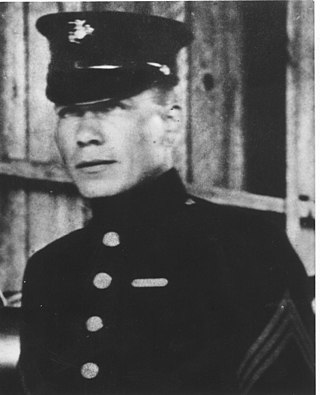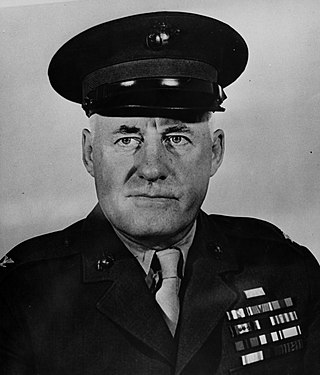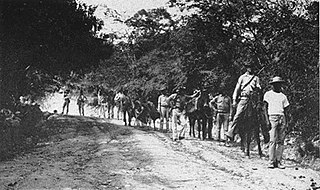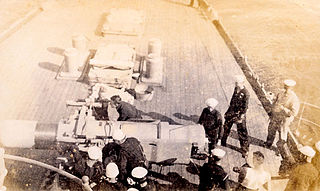
The recorded history of the Dominican Republic began in 1492 when Christopher Columbus, working for the Crown of Castile, arrived at a large island in the western Atlantic Ocean, later known as the Caribbean. The native Taíno people, an Arawakan people, had inhabited the island during the pre-Columbian era, dividing it into five chiefdoms. They referred to the eastern part of the island as Quisqueya, meaning 'mother of all lands.' Columbus claimed the island for Castile, naming it La Isla Española, which was later Latinized to Hispaniola.

The United States occupation of Nicaragua from August 4, 1912, to January 2, 1933, was part of the Banana Wars, when the U.S. military invaded various Latin American countries from 1898 to 1934. The formal occupation began on August 4, 1912, even though there were various other assaults by the United States in Nicaragua throughout this period. American military interventions in Nicaragua were designed to stop any nation other than the United States of America from building a Nicaraguan Canal.

The Military Government of Santo Domingo was a provisional military government established during the American occupation of the Dominican Republic that lasted from May 13, 1916 to September 18, 1924. The United States aimed to force the Dominicans to repay their large debts to European creditors, whose governments threatened military intervention. On May 13, 1916, Rear Admiral William B. Caperton forced the Dominican Republic's Secretary of War Desiderio Arias, who had seized power from President Juan Isidro Jimenes Pereyra, to leave Santo Domingo by threatening the city with naval bombardment.

The Banana Wars were a series of conflicts that consisted of military occupation, police action, and intervention by the United States in Central America and the Caribbean between the end of the Spanish–American War in 1898 and the inception of the Good Neighbor Policy in 1934. The military interventions were primarily carried out by the United States Marine Corps, which also developed a manual, the Small Wars Manual (1921), based on their experiences. On occasion, the United States Navy provided gunfire support and the United States Army also deployed troops.

Masaya is the capital city of Masaya Department in Nicaragua. It is situated approximately 14 km west of Granada and 31 km southeast of Managua. It is located just east of the Masaya Volcano, an active volcano from which the city takes its name. With an estimated population of 138,657 (2022), it is Nicaragua's fourth most populous city, and is culturally known as the City of Flowers.

Joseph Anthony Glowin was a United States Marine who received the Medal of Honor for heroism in combat in the Dominican Republic in 1916.

Roswell Winans was a highly decorated United States Marine, who as a First Sergeant earned the Medal of Honor during combat in the Dominican Republic. He was later commissioned and served as a company officer with the 5th Marine Regiment in France receiving several citations for bravery in combat.

The Dominican Civil War, also known as the April Revolution, took place between April 24, 1965, and September 3, 1965, in Santo Domingo, Dominican Republic. It started when civilian and military supporters of the overthrown democratically elected president Juan Bosch ousted the militarily installed president Donald Reid Cabral from office. The second coup prompted General Elías Wessin y Wessin to organize elements of the military loyal to the dictator Reid ("loyalists"), initiating an armed campaign against the "constitutionalist" rebels.

The Battle of Fort Dipitié was fought on 24–25 October 1915 as part of the First Caco War during United States occupation of Haiti. U.S. Marines and rebel Haitians, known as Cacos, fought at the Grande Rivière du Nord which resulted in the destruction of Fort Dipitié, an outpost of Fort Capois.

The Battle of Fort Rivière was the decisive battle of the First Caco War during United States occupation of Haiti in 1915. A combined force of U.S. Marines and sailors defeated Cacos rebels at Fort Rivière, ending the First Caco War.

The Santo Domingo Affair, or the Santo Domingo Crisis, refers to an incident from 1 February 1904 to 11 February 1904 involving the United States and Dominican militia forces in the Dominican Republic. After the death of a seaman from the USS Yankee on February 1, the U.S. military launched a punitive expedition which routed the Dominican forces.
The Battle of La Flor was fought in May 1928 between the United States Marines, their Nicaraguan National Guardsmen allies, and a force of Sandinista rebels. It occurred at a hill north of the La Flor coffee plantation and ended with a rebel victory when the Americans and Nicaraguan National Guard troops were forced to withdraw.

The Second Battle of Las Cruces, or the New Year's Day Battle, was a major engagement during the American occupation of Nicaragua. It was fought on 1 January 1928, during an expedition to destroy a Sandinista fortress. A column of United States Marines and Nicaraguan National Guardsmen were attacked by a superior force of rebels entrenched on Las Cruises Hill and, after a long battle, the Americans and Nicaraguans routed the Sandinistas and captured their positions.
The Nicaraguan Civil War of 1926–1927, or the Constitutionalist War, broke out after a coup d'état by Emiliano Chamorro, a member of the Conservative Party, removed Nicaragua's democratically elected government, resulting in a rebellion by members of the Liberal Party. The conflict came to an end after a military and diplomatic intervention by the United States resulted in the Pact of Espino Negro, which began the Peace of Tipitapa. Although the civil war came to an end, one Liberal general, Augusto César Sandino, refused to lay down his arms and waged the Sandino Rebellion against the Nicaraguan government and the US Marine Corps until 1933.

The Battle of San Francisco de Macoris took place on 29 November 1916 during the early stages of the United States occupation of the Dominican Republic. Dominican forces in San Francisco de Macoris had refused to lay down their arms and had taken control of the local fortress. This was in direct violation of the terms imposed by the military government installed by the United States. A small squad of Marines that were close by were able to make their way inside the fortress and surprise the defenders, securing it before any organized resistance could take place.
The Battle of Santa Clara took place on 27 July 1927, during the American occupation of Nicaragua of 1926–1933. After being ambushed by Sandinista forces at the Battle of San Fernando, Major Oliver Floyd's expedition of American Marines and Nicaraguan Provisional Guardsmen continued its advance into enemy-held territory in northern Nicaragua.
The Battle of Masaya took place on 19 September 1912, during the American occupation of Nicaragua of 1912–1925 and the Nicaraguan civil war of 1912.
The Battle of Sapotillal, or the Battle of Zapotillal or Zapotillo Ridge, took place on the 9 October 1927 during the American occupation of Nicaragua of 1926–1933 and the Sandino Rebellion. The battle was an unsuccessful attempt by American and Nicaraguan government forces to rescue two downed American airmen.
The Battle of Trencheras was fought on June 27, 1916, between Dominican militias and U.S. Marines during the United States occupation of the Dominican Republic.
The Battle of Puerto Plata was fought on June 1, 1916, between Dominican rebels and U.S. Marines during the Banana Wars.














